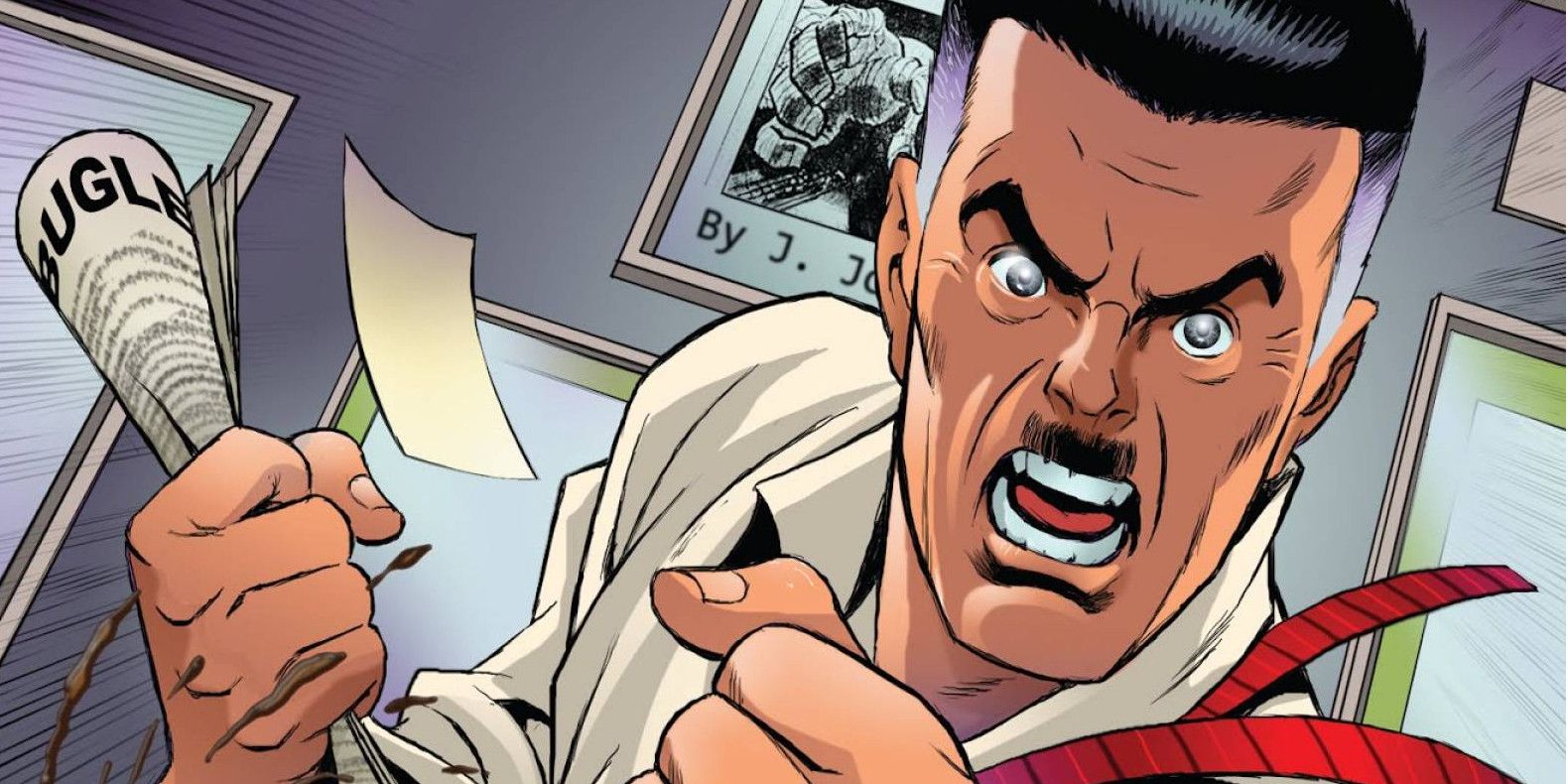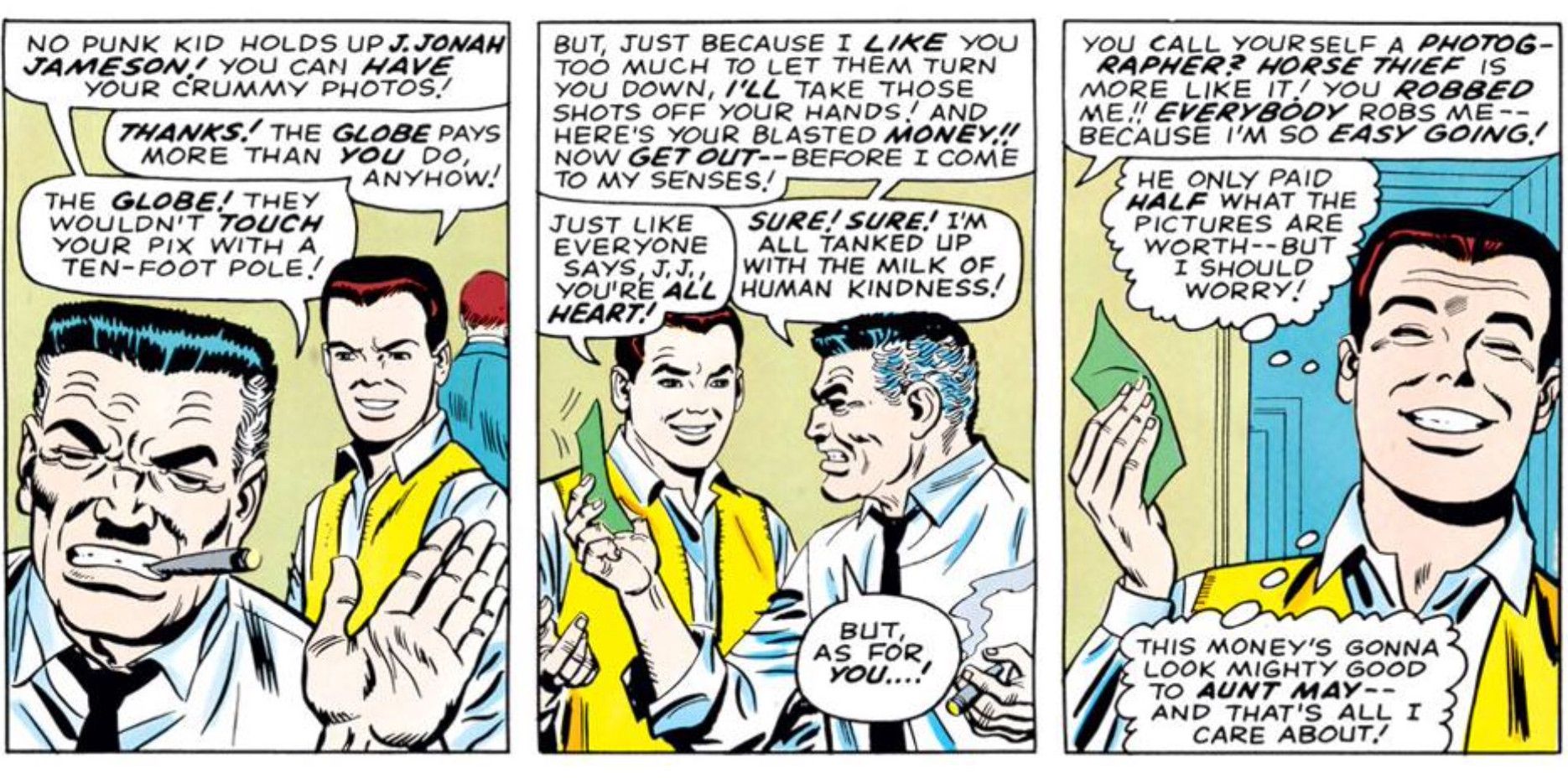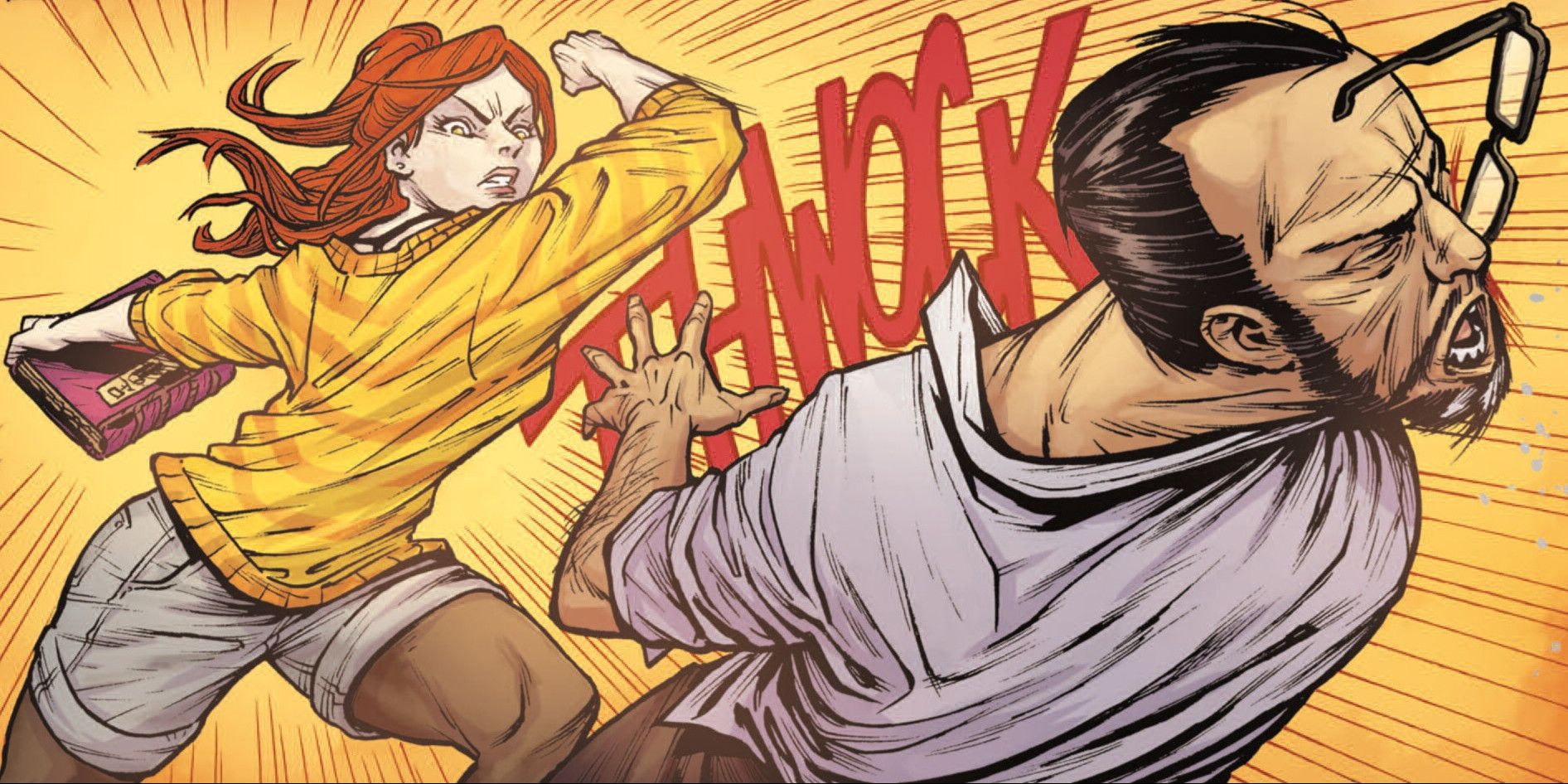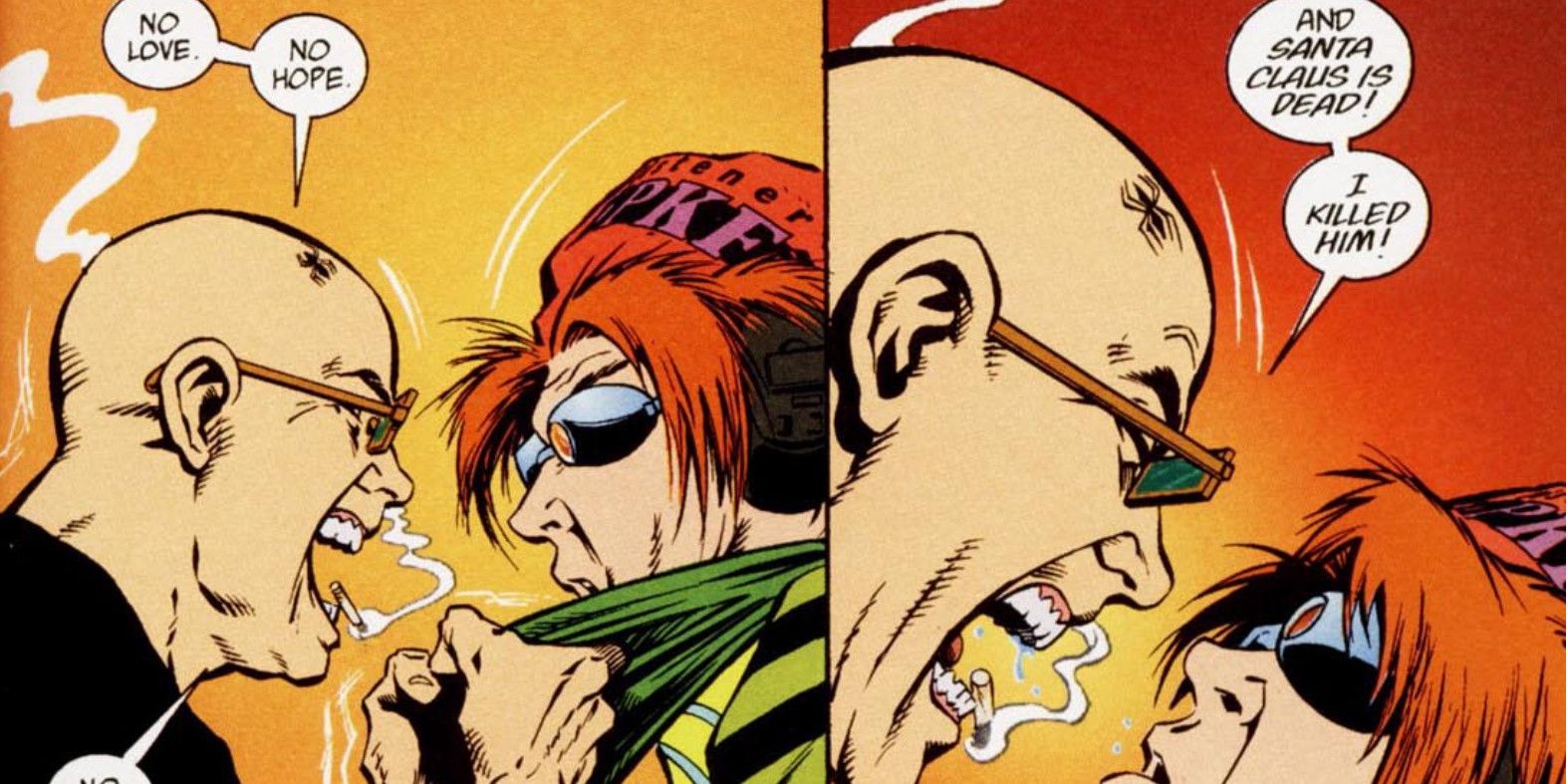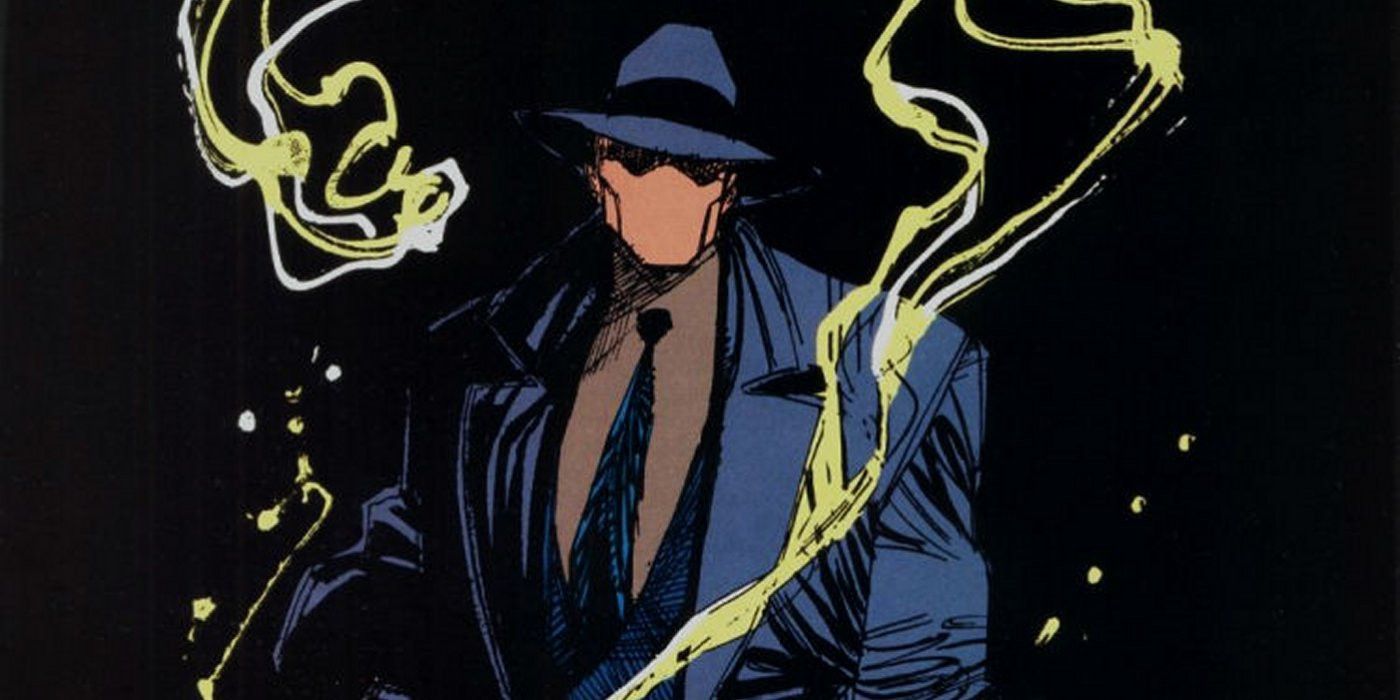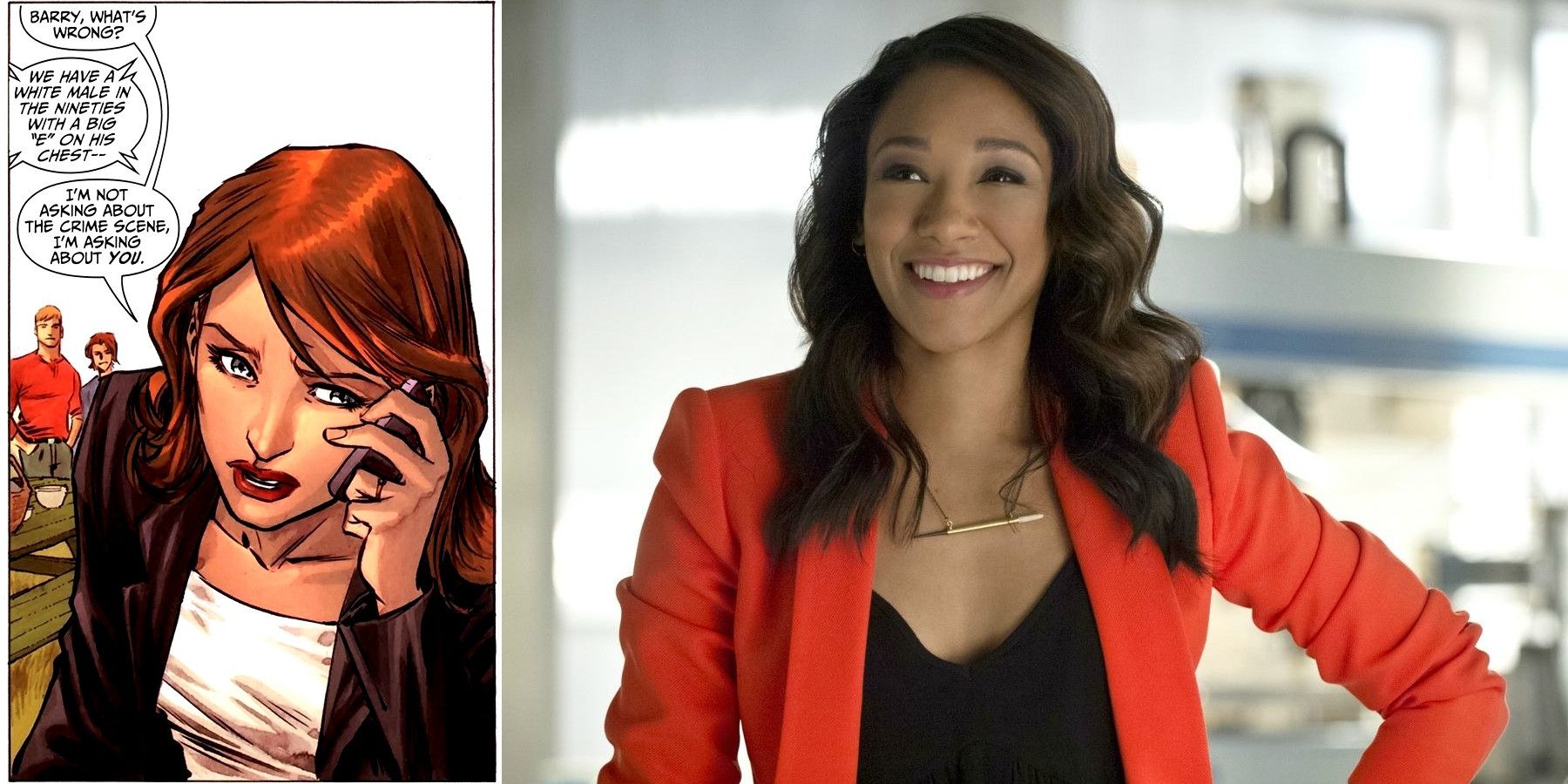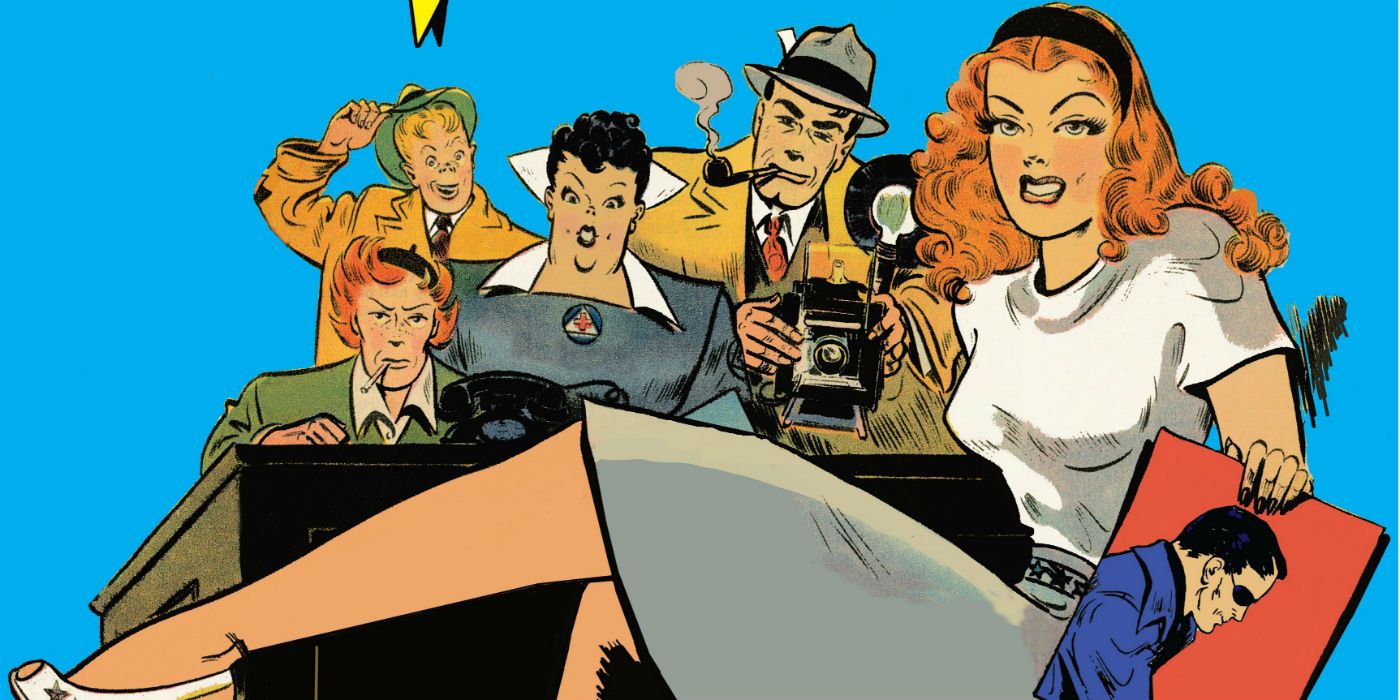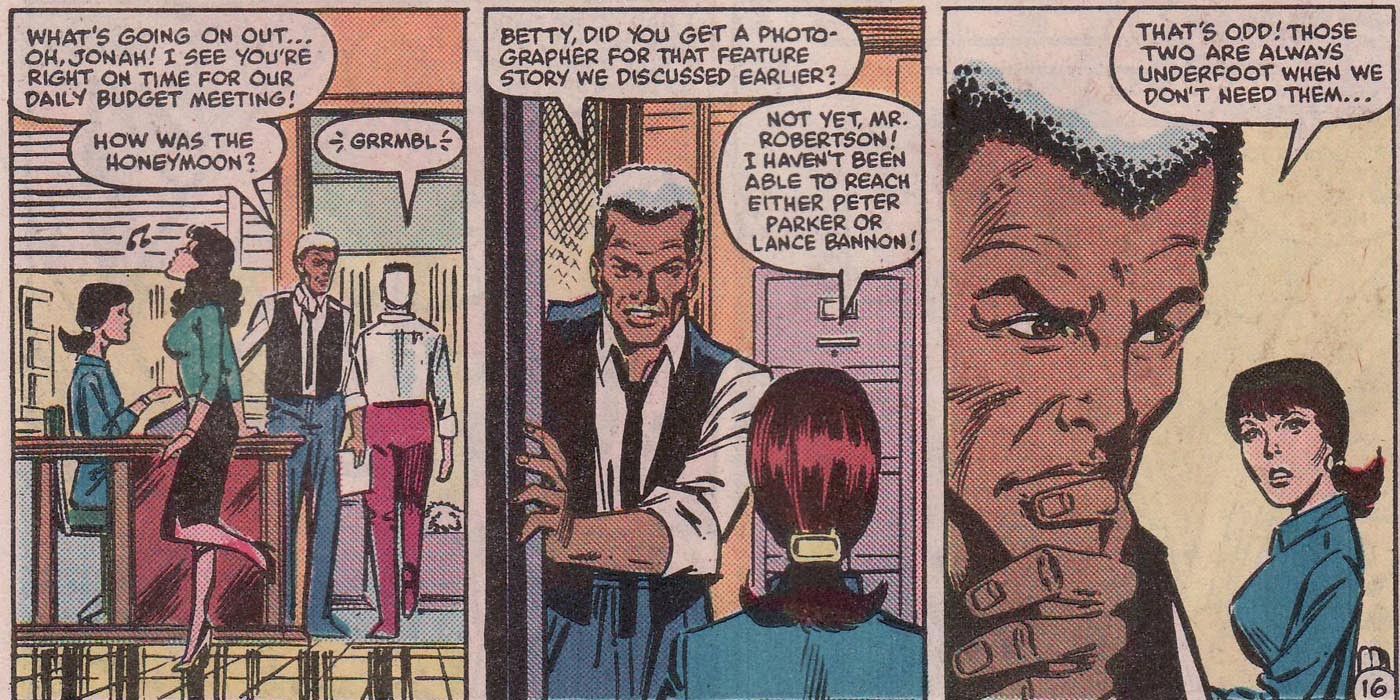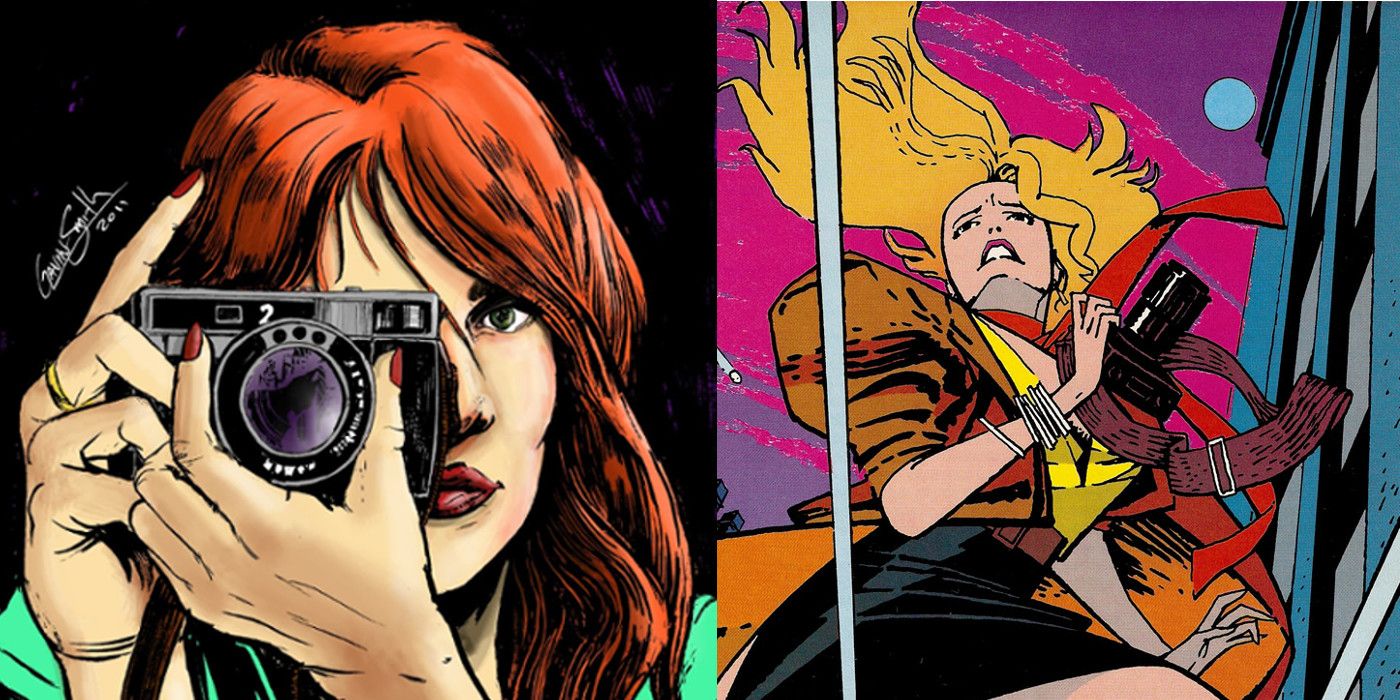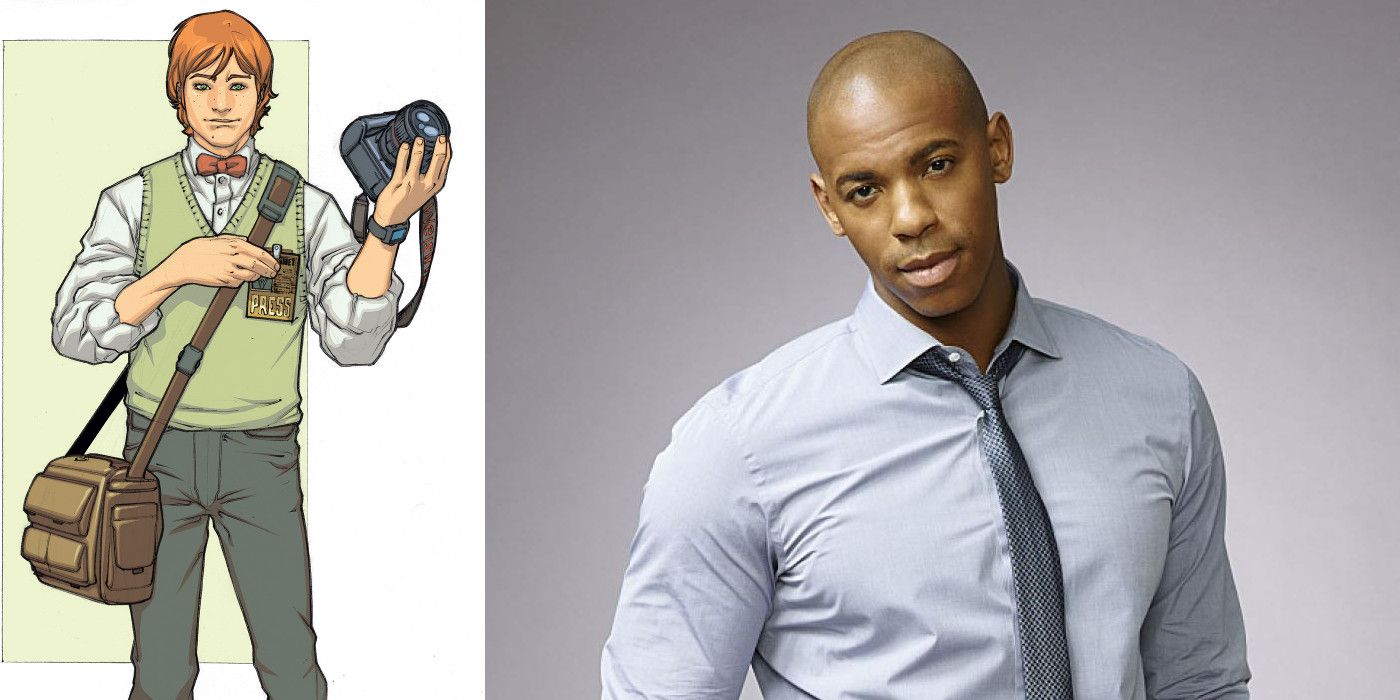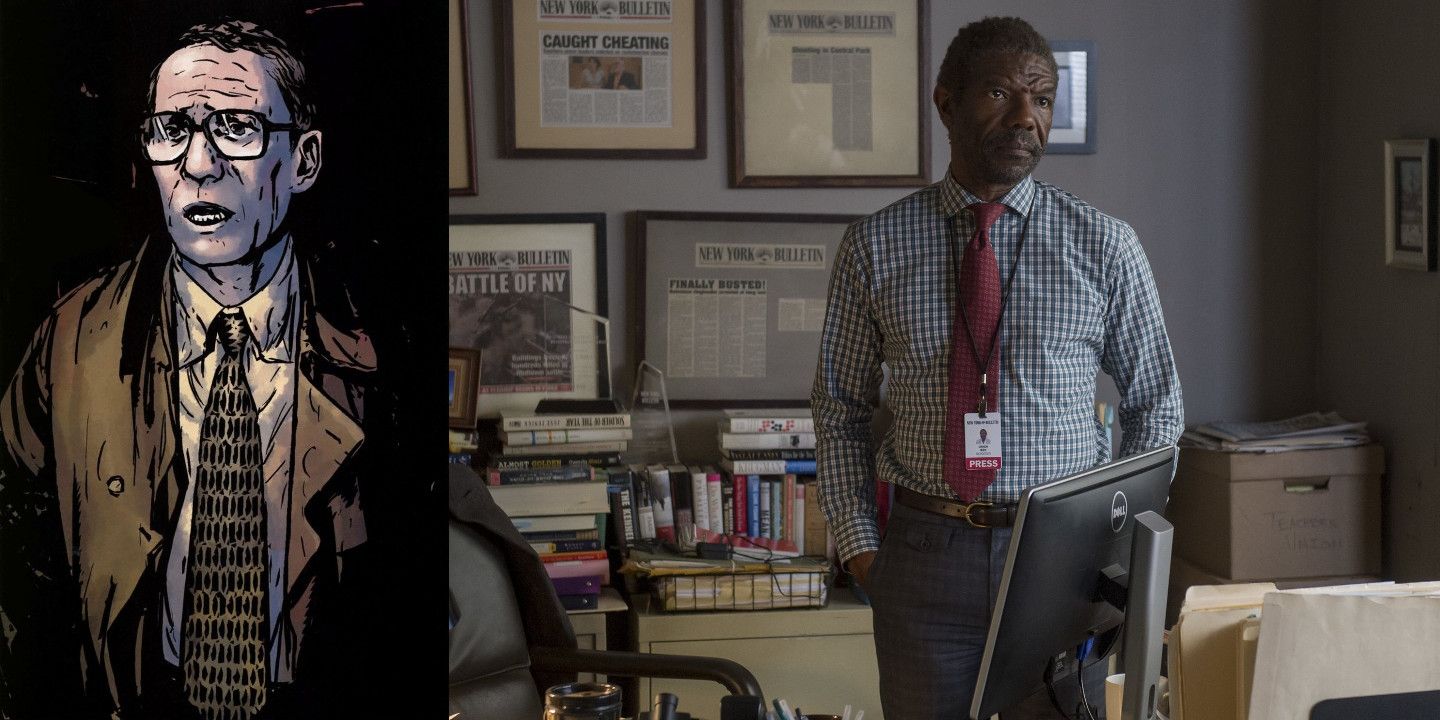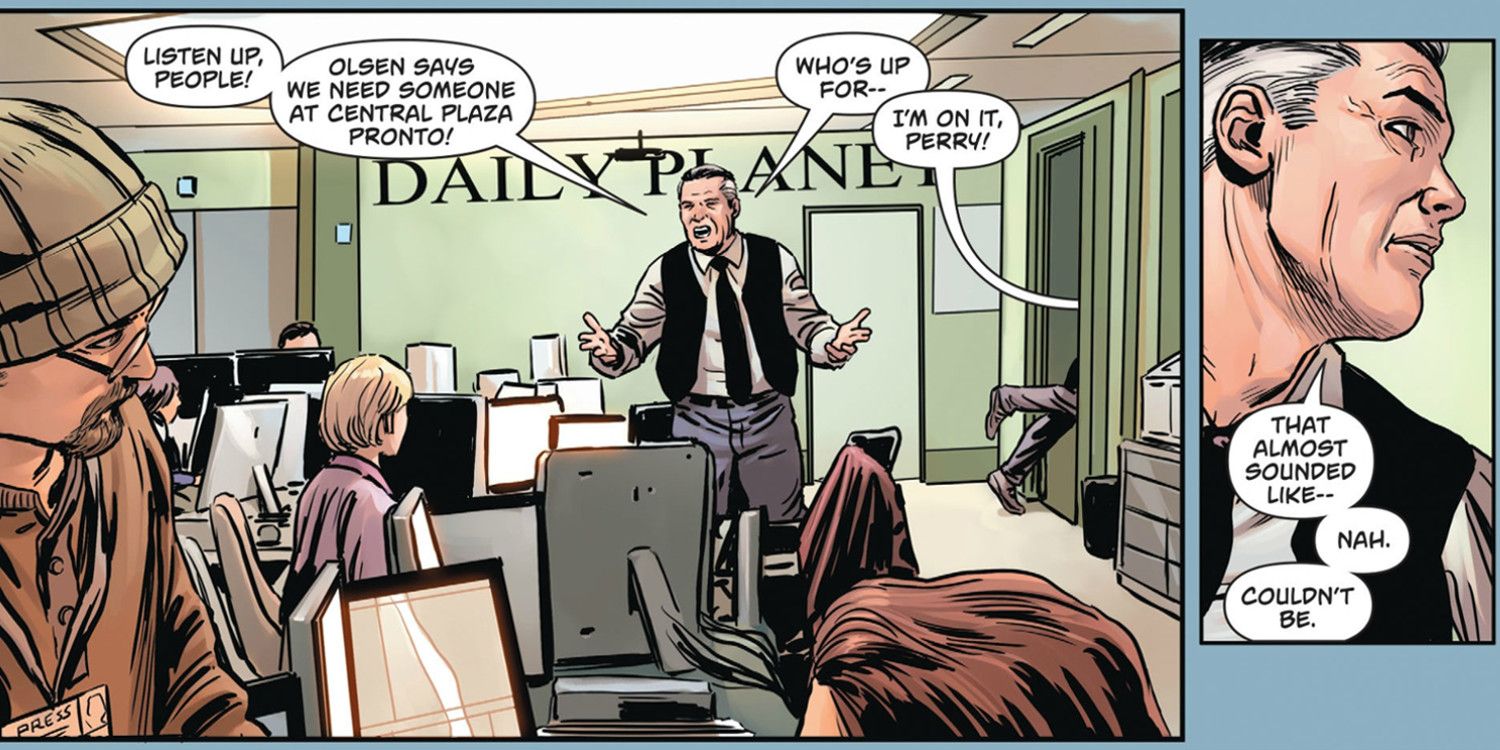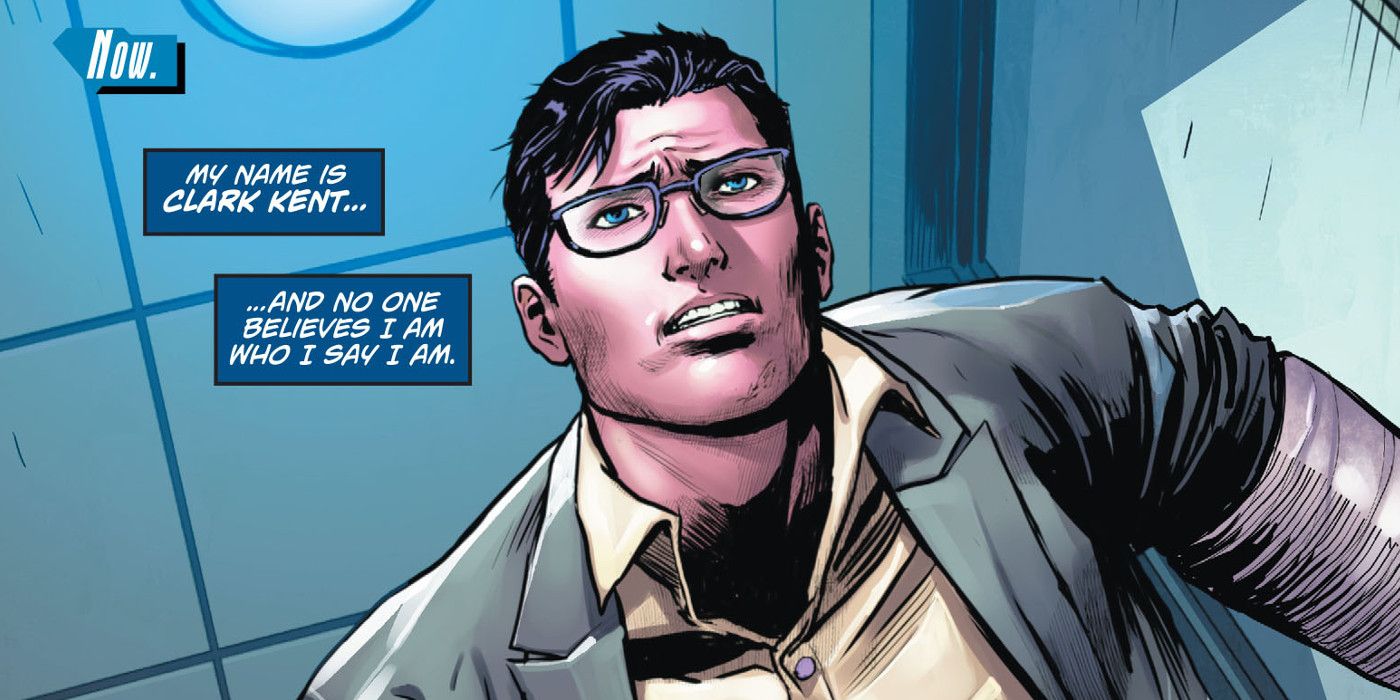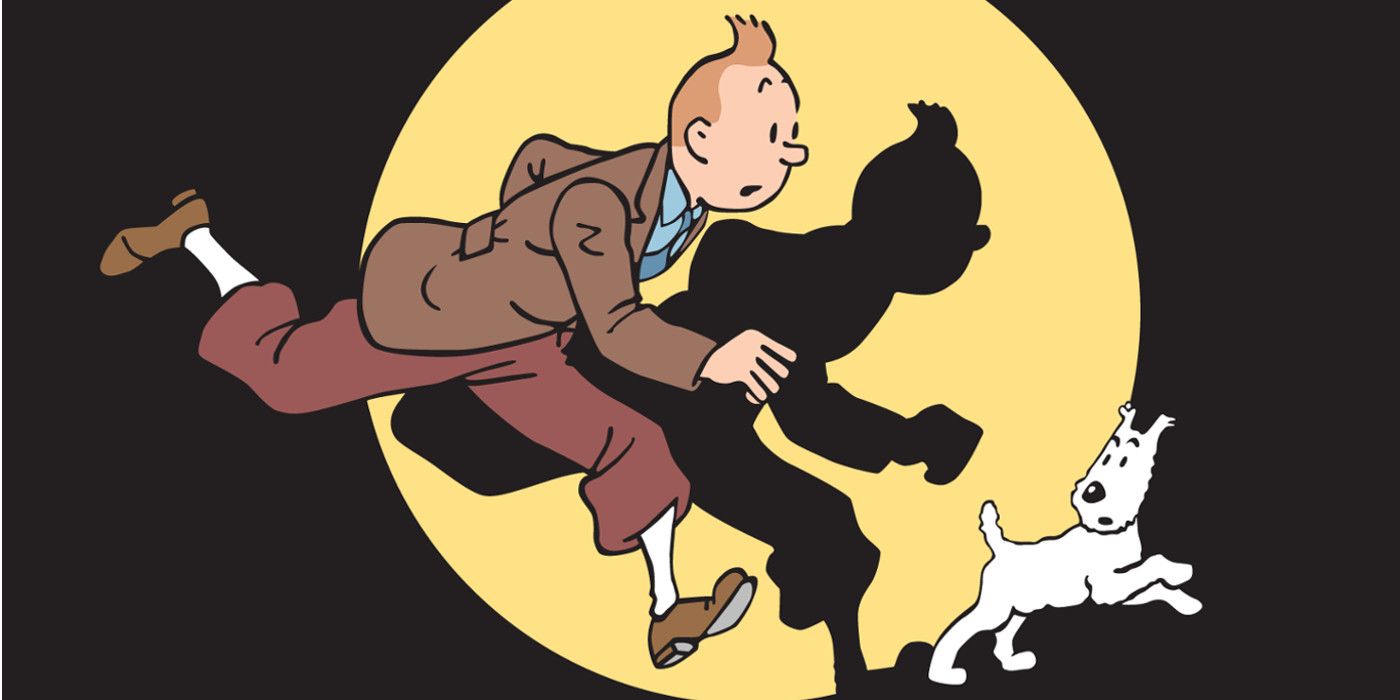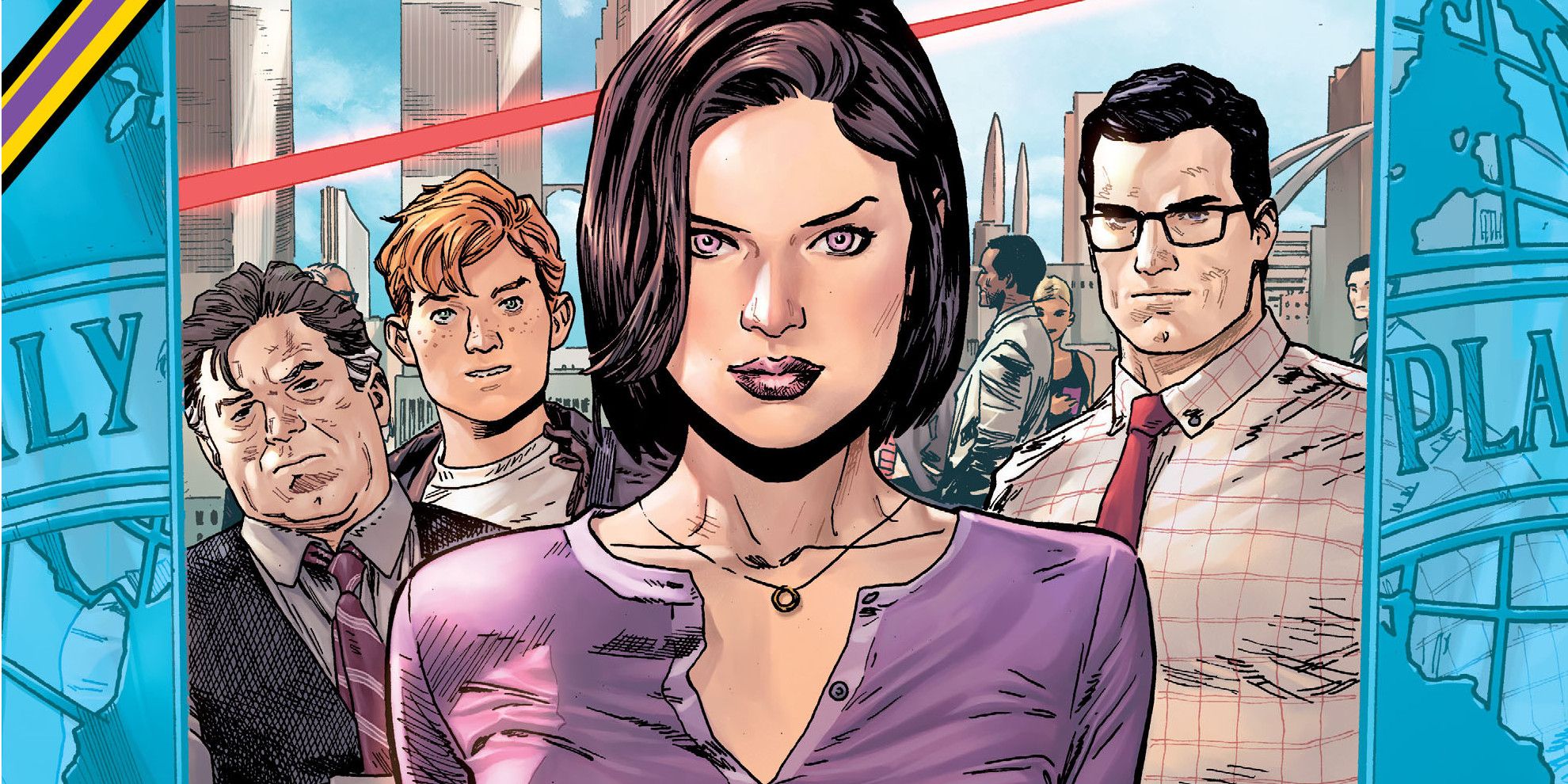People don't always need superpowers to do good deeds. Many comic book characters toil in other noble fields to save the world; fields like journalism, for example! Like superheroes, true journos are idealistic and believe in fighting for what's right, and in exposing wrongdoing and corruption -- sometimes at risk of their safety, health and even their lives.
RELATED: Punch A Nazi: 15 Times Superheroes Fought Fascism
It isn't always dangerous, though; for some characters, digging into a story means solving mysteries that can mean traveling around the world, or even to other planets, which is a lot more exciting than covering school board meetings, muggings or congressional hearings. Here are 15 comic-book journalists who fight a never-ending battle for truth and justice -- with the power of the Fourth Estate.
15 PETER PARKER
Peter Parker has had a notable career as a freelance photojournalist for the New York Daily Bugle, although for him it was just a way to pay the bills. Struggling to support his Aunt May after Uncle Ben was murdered in "Amazing Fantasy" #15, Parker hit on the notion of taking photos of his fights as Spider-Man. The first time he did this was in 1963's "Amazing Spider-Man" #2, written by Stan Lee and drawn by Steve Ditko, when he fought The Vulture. Parker then sold the photos to Daily Bugle publisher J. Jonah Jameson, which became a regular practice. Jameson, however, uses the photos to trash Spider-Man's reputation. Parker tried selling photos to rival the Daily Globe in "Amazing Spider-Man" #27, but editor Barney Bushkin asked too many questions about how he got the pictures. Parker concluded Jameson's lack of interest was worth the lower pay.
One benefit: the book "Webs: Spider-Man in Action," a collection of Parker's Daily Bugle photos, first shown in 1988's "Amazing Spider-Man" #304. Unfortunately, since he sold the photos to the Bugle on a work-for-hire basis, Parker didn't own the copyrights, and only made money by selling the book on tour.
14 APRIL O'NEIL
Yellow-jumpsuited TV reporter April O'Neil has been a key presence in the world of the "Teenage Mutant Ninja Turtles" throughout all if its incarnations -- as a comic book series, nultiple animated TV shows, several live-action movies, video games and even oft-forgotten stage concerts. But at the start, she wasn't a reporter -- she was a computer programmer.
O'Neil's first appearance was in 1984 in issue #2 of the original "Teenage Mutant Ninja Turtles" comics series, co-created by Kevin Eastman and Peter Laird. It was the first animated TV series version of the property that presented O'Neil as a reporter for the Channel 6 TV station in New York, and gave her the yellow jumpsuit and red hair. That series, which ran in syndication beginning in 1987, lasted for 10 seasons. Episodes frequently had O'Neil helping the Turtles on their adventures, in person and using the TV station's resources. Subsequent versions of "TMNT" changed O'Neil into a warrior and a budding scientist.
13 SPIDER JERUSALEM
Spider Jerusalem, the protagonist of "Transmetropolitan," is gonzo all the way. Created by writer Warren Ellis and artist Darick Robertson in 1997, Jerusalem is foul-mouthed, freely smokes, drinks and uses mind-altering drugs. But he is committed to revealing the truth -- or, as he puts it "The Truth" -- to the world. The series is set in an unspecified future, and begins with Jerusalem ending his life as a mountain recluse to avoid being sued for not delivering two books he was contracted to write. He moves back to The City and finagles his way back into his old job with The Word newspaper. From there, he inveighs against society and political corruption.
"Transmetropolitan" became a Vertigo book after a year under the Helix imprint. Much of the run showcases Jerusalem and his cohorts -- whom he calls the Filthy Assistants -- engaged in a war of wills with Gary Callahan, who, once elected president, uses every lever of the office to crush his enemies in the most brutal and disgusting ways.
12 VIC SAGE
Like Spider Jerusalem, investigative journalist Vic Sage is deeply concerned about political corruption, but pushes for answers using a superhero persona -- The Question. Created by Steve Ditko, The Question first appeared in 1967's "Blue Beetle" #1 for Charlton Comics. Vic Sage -- whose name is a play on "visage" -- worked with his mentor Aristotle Rodor, who invented the mask The Question wears that makes his face appear to have no eyes, mouth or nose.
After Charlton folded, its characters were acquired by DC Comics and were mixed into the DC Universe. The Question then headlined the 1987 series "The Question," written by Dennis O'Neil and drawn by Denys Cowan. This series had Sage struggling in Hub City, which had a thoroughly dysfunctional and corrupt government. O'Neil has said the city was modeled on a real place; readers suggested it might be Washington, D.C. or East St. Louis, but no one knows for sure. Where Ditko's Question followed Ayn Rand's Objectivist views, O'Neil's Question explored Zen. Vic Sage passed on the mantle of The Question to former Gotham Police detective Renee Montoya before dying of lung cancer in the "52" maxiseries. However, he has since appeared in "Blackest Night" and in the New 52.
11 IRIS WEST
Iris West had a simple introduction but a convoluted backstory. She first appeared in The Flash's origin, in 1956's "Showcase" #4, written by Robert Kanigher and drawn by Carmine Infantino; inked by Joe Kubert. West is a reporter for Picture News in Central City and Barry Allen's fiancee. Allen doesn't bother to tell her about the accident that transformed him into the Fastest Man Alive -- not even after they get married! That was in 1966's "The Flash" #165.
West finds out his secrets because, quite simply, Allen talks in his sleep. It is revealed that West was born a thousand years in the future and sent to the past for her safety. She is murdered by Professor Zoom in 1979's issue #275, written by Cary Bates, penciled by Alex Saviuk and inked by Frank Chirarmonte. Being a time traveler, West eventually is revived. On TV's "The Flash," Iris West, played by Candice Patton, isn't a time traveler. But she is an investigative journalist for Central City Picture News and is Barry Allen's girlfriend.
10 BRENDA STARR
The long-running newspaper comic strip "Brenda Starr, Reporter" covered the adventures of the globe-trotting journalist for 70 years. Starr was created by Dale Messick, a greeting card illustrator in Chicago who hit it big after she sold the strip to the Chicago Tribune-New York News Syndicate in 1940. Starr followed in the footsteps of Lois Lane and Hildy Johnson of the film "His Girl Friday," where women reporters aggressively went after the news at a time when most females in news organizations were limited to covering society events and doing secretarial work.
At its height, "Brenda Starr, Reporter" ran in 650 newspapers and inspired comic books, a movie serial and a 1976 TV movie pilot. There was also a theatrical film starring Brooke Shields that was made in 1986 but sat on the shelf until 1989 and wasn't shown in the U.S. until 1992 because of distribution and rights hassles. Reviews were dismal. One misstep the movie made was in having a man as the "Brenda Starr" cartoonist; the strip always had female creators, including DC Comics artist Ramona Fradon. The strip was retired in 2011.
9 JOE ROBERTSON
As city editor of the Daily Bugle newspaper, Joe "Robbie" Robertson was a moderating influence on its bombastic publisher, J. Jonah Jameson. Robertson was introduced in 1967's "Amazing Spider-Man" #51, in a story written by Stan Lee and drawn by John Romita. Many stories had Robertson trying, and sometimes succeeding, in talking Jameson out of slanting stories to blame superheroes, and particularly Spider-Man, for wrongdoing.
A 1988 storyline in "Spectacular Spider-Man" written by Gerry Conway fleshed out Robertson's backstory. Robinson runs afoul of Tombstone, a childhood antagonist turned mob enforcer. As adults, Robertson witnesses Tombstone commit a murder but keeps silent. Years later, Robertson resolves to make things right by exposing Tombstone, but Tombstone breaks his back. Robertson winds up going to prison himself because of a judge in the Kingpin's pocket. Worse, Tombstone arranges to go to the same prison, kills Robertson's protector, and forces Robertson to fight for his life after engineering a breakout. Ultimately, Robertson is pardoned for helping recapture Tombstone. Robertson eventually becomes Bugle editor-in-chief after Jameson is forced to resign, leaves after a new owner turns the paper into a gossip sheet, and is enticed to return after Jameson's wife buys it back.
8 VICKI VALE
Vicki Vale was brought into the Batman titles as a romantic foil in 1948's "Batman" #49, in a story written by Bill Finger, penciled by Bob Kane and Lew Schwartz and inked by Charles Paris. Vale was a photojournalist for the Gotham Gazette, assigned to cover Batman, although over the years she has worked in TV, too. Like Lois Lane, Vale was attracted to the hero but often tried to expose his secret identity, forcing him to spend time blocking her. The cat-and-mouse chase between them ended after editor Julius Schwartz launched the "New Look" Batman in 1964, putting Vale out of the title. She resurfaced in the 1970s, appearing off and on over the next two decades, becoming a rival with Catwoman for Batman's affections during Gerry Conway's run on "Batman." She was perhaps most famously portrayed by Kim Basinger in Tim Burton's "Batman" film from 1989.
Vale had a prominent role in the 2009 crossover series "Batman: Battle for the Cowl." Batman was missing, but Vale focuses on the whereabouts of Bruce Wayne, who at the time was being impersonated by Hush. Her investigation uncovers the secret identities of not just Batman but his whole team, but she shelves the story she is writing after Batman rescues her from Ra's al-Ghul.
7 J. JONAH JAMESON
In 1980's "What If?" #24 ("What If Spider-Man Rescued Gwen Stacy?"), the Green Goblin referred to J. Jonah Jameson as "Spider-Man's greatest enemy, save myself." Indeed, Jameson has been a thorn in Spider-Man's side ever since "Amazing Spider-Man" #1 in 1963, written by Stan Lee and drawn by Steve Ditko. He sometimes is shown as a principled, responsible journalist who supports civil rights and battles organized crime and corrupt businessmen such as Norman Osborn. More often, however, he's been a belligerent hothead using the Daily Bugle to run an ongoing smear campaign against Spider-Man, which included financing supervillains to battle him. The fact that Spider-Man was secretly freelance photographer Peter Parker sends him off the rails when Parker unmasks during the "Civil War" storyline.
After years of running the Bugle -- which included resigning as editor for his part in creating the Scorpion -- Jameson becomes mayor of New York. But collaborating with the Superior Spider-Man -- Otto Octavius in possession of Peter Parker's body -- leads him to resign in disgrace. Jameson has also lost ownership of the Bugle, and moved on to another venture: the Fact Channel, a sensationalized news outlet that is clearly based on Fox News.
6 JIMMY OLSEN
The trademark characteristics of Jimmy Olsen are bizarre transformations and the "signal watch" given to him by Superman. He first appeared in "Action Comics" #6 as an anonymous copy boy, in a story written and drawn by Superman creators Jerry Siegel and Joe Shuster. The copy boy showed up a few times in comics, but was finally given a name on the "Adventures of Superman" radio show in 1940, and first called "Jimmy Olsen" in print in 1941's "Superman" #13.
Olsen developed a close friendship with Superman as he learned the ropes at the Daily Planet under editor Perry White. For 20 years, Olsen headlined his own title, "Superman's Pal Jimmy Olsen," starting in 1954. Olsen frequently got into zany situations -- like almost marrying a gorilla -- underwent bizarre transformations, and had a love/hate romance with Lois Lane's sister Lucy. In 1970, comics legend Jack Kirby took over the title, making it part of his "Fourth World" saga. Olsen was a big part of the "Adventures of Superman" TV show and most of the movies, but was executed in "Batman v Superman: Dawn of Justice." He's still alive on TV's "Supergirl," though, and is played by Mechad Brooks.
5 BEN URICH
Dogged Daily Bugle investigative reporter Ben Urich appears briefly in 1978's "Daredevil" #153, written by Roger McKenzie and drawn by Gene Colan and Tony DeZuniga. Of course, being a stellar journalist, he is soon on the trail of Daredevil's secret identity. By issue #164, by McKenzie, with Frank Miller and Klaus Janson on art, Urich confronts Daredevil with his conclusion that he's Matt Murdock. Daredevil talks Urich into spiking the story.
After that, Urich and Daredevil have a long association, trading information with each other to further their own ends. Urich does an expose that takes down the Kingpin, and later writes a book on Norman Osborn's crimes after he is believed dead. Osborn returns and discredits Urich, but eventually he is vindicated. Urich's job is at risk after the Daily Globe exposes Daredevil's identity and he refuses to admit what he knew. Urich also had to contend with his nephew Phil becoming the Hobgoblin, and covered major events such as Civil War, World War Hulk and Shadowland. On Netflix's "Daredevil" TV series, Urich is played by Vondie Curtis-Hall. There, Urich's investigation of the Kingpin costs him his life.
4 PERRY WHITE
Perry White is not just the editor-in-chief of the Daily Planet, he is its soul and conscience. He was created for the "Adventures of Superman" radio show, and first appeared as Planet editor in print in 1940's "Superman" #7, in a story written by Jerry Siegel, drawn by Joe Shuster and inked by Wayne Boring. White's introduction completed the retcon of the Daily Star and editor George Taylor from the series. Taylor and the Star were later explained as being on Earth-Two.) Ever after, White has been the leader of the Planet, making it the foremost newspaper in the world. White is one of Superman's closest friends in both of his guises, as well as friend and boss to Lois Lane and mentor to Jimmy Olsen.
In the post-Crisis DC Universe, the Planet has fearlessly gone after business mogul Lex Luthor, even after he was elected president of the United States. Luthor is presently owner of the Planet, making things difficult for White.
3 CLARK KENT
Clark Kent's passion for justice pushes him to work as a newspaper reporter right from the start, in 1938's "Action Comics" #1, by ]Siegel and Shuster, although the earliest stories had him at the Daily Star. Since then, the Planet has become Kent's outlet for serving the public and dealing with problems Superman can't fix. Kent hasn't always been an ink-stained wretch, however.
He made the shift from print to TV in 1971's "Superman" #233, written by Dennis O'Neil and drawn by Curt Swan and Murphy Anderson. On the direct order of Galaxy Communications head Morgan Edge, Kent becomes a reporter for WGBS-TV. Back then, he accepted it, ultimately becoming the network's anchor. But in 2012's "Superman" #13 (Vol. 3), written by Scott Lobdell and drawn by Kenneth Rocafort, Kent angrily quits rather than accept assignment as a TV entertainment reporter. That Clark Kent, the alter ego of the "New 52" Superman, should have died in "Superman" #52 (Vol. 3). But a human, non-powered Clark Kent shows up in "Action Comics" #963 -- and meets the Convergence Superman, who seeks to learn just who this other Kent is; a mystery that remains at the time of this article's writing.
2 TINTIN
Tintin, the boy adventurer, predates Superman by nine years, first appearing in a 1929 supplement of Le Vingtième Siècle (The Twentieth Century), a newspaper in Belgium. From there, his popularity has spread to 24 albums, two animated TV shows, a radio show and five theatrical movies. Tintin was created by Belgian cartoonist Hergé, the pen name of Georges Remi.
Tintin, like Billy Batson, is a young adult but still an accomplished reporter. His adventures have taken him to Africa, New York, the Soviet Union, China and even the moon, in 1952. He is always accompanied by his loyal dog, Snowy, and has a colorful cast of characters -- the foul-mouthed and frequently drunk Captain Haddock; the absent-minded Professor Cuthbert Calculus; and bumbling detectives Thompson and Thomson. His last new published story was in 1986, but many of the "Adventures of Tintin" books are in frequent publication, and are often updated to reflect modern attitudes. Steven Spielberg directed a Tintin film in 2011, which was originally meant to be the first of a trilogy.
1 LOIS LANE
Lois Lane possesses many traits -- competitiveness, doggedness, loyalty, skepticism -- that have made her an enduring character and, in the DC Universe, one of the foremost investigative journalists in the world. Lane first appeared in "Action Comics" #1 in the first Superman story, by creators Jerry Siegel and Joe Shuster, marching firmly with trailblazing newswomen who wouldn't be held back by attitudes that the so-called "fairer sex" couldn't handle hard news.
In the Silver Age, stories played up the love triangle between Lane, Superman and his alter-ego Clark Kent. She headlined the series "Superman's Girl Friend, Lois Lane" from 1958 to 1974, and has been a key part of the Superman titles throughout. She and Clark Kent were married in 1996's "Superman: The Wedding Album," although the "New 52" dissolved their relationship. Lane reveals Superman's identity to the world in 2015's "Superman" #43, written by Gene Yang and drawn by John Romita Jr.; inked by Klaus Janson. Lane becomes Superwoman in the DC Rebirth but dies at the end of the first issue(!). However, the pre-"Flashpoint" Lois Lane (who is still married to her Superman) is investigating her death in the current run of "Action Comics."
Who are your favorite comic book journalists? Let us know in the comments!

